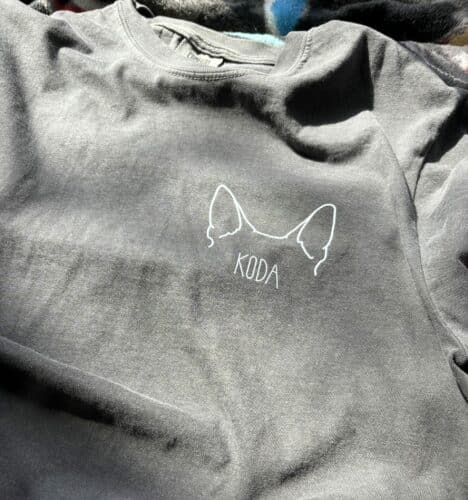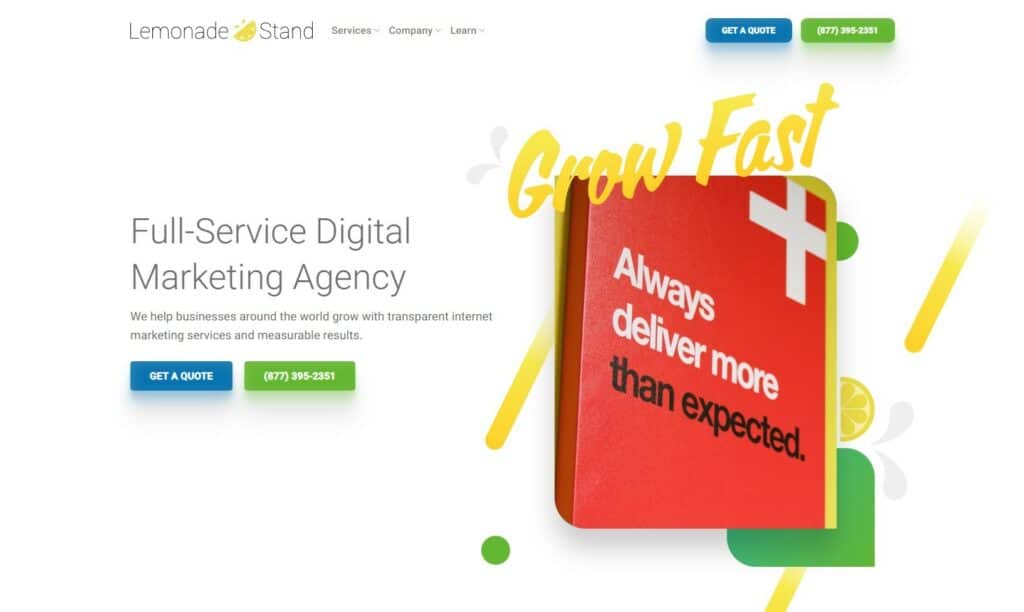I love the team I work with and we work well together. I attribute my connection and attention at work to Build Then Bless—I don’t see a way around it. It helped turn coworkers living thousands of miles away into friends I can count on. Cheesy, I know, but it’s the truth.
I’m a COVID young professional, one of the tens of thousands of students and young adults who entered the workforce during the pandemic. I’ve never owned a pantsuit or planned my commute time. My office is my dining room table and my break room is 10 steps away. I love remote work and consider myself very, very lucky to have a job that gives me that option.
But one of the biggest challenges of remote work is feeling connected to coworkers and management. There are only so many Slack messages you can send and ice breaker questions you can ask at team meetings. After a year of part-time work at Lemonade Stand, I graduated with my bachelor’s and switched to full-time.
Since I was going to be a “full-fledged” team member, I wanted to improve my relationship with coworkers. What I’m about to say is going to be a “duh” moment but stick with me.
The more I knew about my coworkers, the more connected I felt to them. The better the connection, the more trust and collaboration grew. We got more productive, creative, and effective. Better productivity = happier employees and more money for Lemonade Stand.
I didn’t realize all of that at the time—I just knew I wanted more work friends! So, where did I go from there? I used Build Then Bless—Lemonade Stand’s mission and service program.
What Is Build Then Bless?
This phrase started as Lemonade Stand’s mission 10 years ago and has since turned into an irreplaceable part of our day-to-day at LS. It looks like this:
Every month, each LS employee gets $50 on a debit card to serve other people. I’ve used mine to buy Christmas gifts for a struggling neighbor, pay for a stranger’s dinner, send food to a friend experiencing a sudden loss, and much more.
This program started because Lemonade Stand management tried to donate $25,000 to a charity and were told that their donation was “too small.” I’m not sure which nonprofits are out there turning down money but it led to something much bigger and better than the average corporate donation.
Management took a step back and asked, “What could this $25,000 do in the hands of our employees?” Instead of giving a lump sum to a charity that none of the employees had a connection to, why don’t we give the money to them and see what good comes from it?
And thus, Build Then Bless was born. Now, every month, Lemonade Stand employees give $2500 back to our communities through one-on-one interactions. We’re disrupting corporate philanthropy—no more galas, silent auctions, or mega check writing.
How I Used Build Then Bless to Connect With My Coworkers

I decided it was time to do some detective work. Anytime I had a meeting with a coworker and we would do the typical small talk, I would ask a few more questions. If a coworker mentioned their pet, I would ask its name and what its favorite treat was. If someone mentioned their favorite food, I would make a note of it and ask about their favorite drink too.
After a few weeks, I started to use my Build Then Bless money to connect with my coworkers. An Instacart order of someone’s favorite snack, a personalized t-shirt with the name and picture of someone’s dog (see right above). Roadtrip snacks for a cross-country move, Chick-fil-A for a team member that had a busy week.
Turns out that people really feel connected to you when you send them gifts! Who knew? But it went further than that. I was surprised at how the intentional gift-giving made me hyper aware of my coworkers’ needs and interests. It changed the way I communicated with them and got to know them.
I hate to say it but I wouldn’t have spent the time asking better questions if I hadn’t been thinking about gifts to send them. Remote work creates a pressure to get this awkward Zoom meeting over with or to log off at 5 pm. But the BTB method made me invest in my relationships with my coworkers and that investment paid off.
I love the team I work with and we work well together. I attribute my connection and attention at work to Build Then Bless—I don’t see a way around it. It helped turn coworkers living thousands of miles away into friends I can count on. Cheesy, I know, but it’s the truth.
How the BTB Method Can Work for You
If you’re an employee reading this, show it to your management team or HR department. Because Lemonade Stand turned Build Then Bless into a program that every business can implement.
I mentioned that I started to keep a list of all these little details about my coworkers. Once the BTB software launched, I started keeping them in the app instead. And the app made my job a lot easier!
Every coworker has a profile where they can share all their favorite things and important dates. I even set reminders for team member birthdays or work anniversaries so I can send something over.
We can do this for clients as well. This client relationship building part of Build Then Bless has contributed to our 60% sales close rate (30% is considered “best-in-class” for agencies like ours).
If you’re a decision-maker or owner, think about what Build Then Bless could do for your team unity. We talk about our experiences every week in our whole team meeting, which means that the impact of BTB extends beyond small teams. Because of BTB, I know more about coworkers on other teams than I ever would if we worked in-person.
Whether you give your employees $10 or $100, there is something so impactful about putting the power of giving in their hands. Dozens of research papers have outlined the positive effect of serving others on mental health, happiness, and productivity. Not to mention the good it does for client relationships.
So when people ask me if I like my job, I say something like, “Yeah, content writing is great! But the company I work for does this really cool thing … ” and then give a 15-second spiel of this blog. After two years, I have yet to meet someone who hasn’t said, “I’ve never heard of anything like that; you’re so lucky to work there” (or something like that).
And they’re right—I really am.

